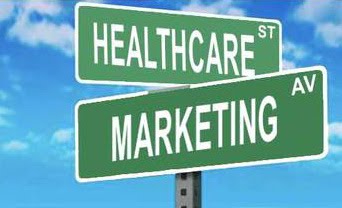 Phil Bryant holds the fate of more than half a million Mississippians in the palm of his hands as key health care policy decisions hang in the balance. He is the Governor of the great state of Mississippi and has the power to make two major decisions. #1 – Expand Medicaid up to 138% of the federal poverty level. #2 – Decide whether or not to build a state-based Health Insurance Marketplace or leave it up to the Federal government. Both decisions weigh heavily on the future of access to affordable health coverage for the people of Mississippi.
Phil Bryant holds the fate of more than half a million Mississippians in the palm of his hands as key health care policy decisions hang in the balance. He is the Governor of the great state of Mississippi and has the power to make two major decisions. #1 – Expand Medicaid up to 138% of the federal poverty level. #2 – Decide whether or not to build a state-based Health Insurance Marketplace or leave it up to the Federal government. Both decisions weigh heavily on the future of access to affordable health coverage for the people of Mississippi.
Mississippi Blues: There are more than 2.9 million people in Mississippi and roughly 18% lack health coverage. Of the 530,000 uninsured Mississippians, half are Caucasian, 45% are African-American, and Hispanics represent the remaining 5%. However, African-Americans and to a lesser degree, Hispanics are disproportionately more uninsured as they represent only 37% and 2% of the state population respectively. The lack of health coverage has been a byproduct of many other socioeconomic issues. For example, people who lack health insurance tend to be less educated, earn less income, and either do not work or work for an employer that does not offer insurance. Mississippi is no different. Poverty rates exceed the national average (21% vs. 8%). A higher percentage of Mississippians receive SNAP benefits (15% vs. 8%). 50% of the uninsured population make less than $15,000/year. 91% of those uninsured have a high school level education or less. Lastly, 57% of the uninsured have at least 1 member of their household working.
The Party of “No”: Despite these statistics, as of August 2013, Governor Bryant has opted against enacting both policies; to no surprise. Republican opposition to Obama’s Patient Protection and Affordable Care Act (PPACA) started even before the bill was signed into law back in March 2010. Detractors of the law, like Bryant, suggest a range of arguments ranging from (1) public disapproval, (2) over-reach of the federal government, (3) the expansion of entitlements during a time of fiscal crisis, and (4) the lack of economic sustainability and unintended consequences of the law. All arguments hold good merit and should be discussed, explored, and researched. Here is an attempt to go beyond the Republican rhetoric and find comprehensive solutions to the many issues facing the implementation of the health care reform law in the various Red States across the country.
Argument #1 – Public Disapproval: The term “Obamacare” solicits negative feedback from most residents living in a Red state. Mississippi is not any different. Bryant has been vocal in his opposition of health care reform and his opposition actual reflects his constituents.
Response: 50% of the uninsured in Mississippi would benefit from the Medicaid expansion. The other 50% would largely benefit from lower cost plans sold through the Health Insurance Marketplace that Mississippi also decided not to run at a state level. Additionally, despite the public disapproval, the Mississippi Insurance Commissioner, Mike Chaney, has been a catalyst for trying to carry out the law the best way possible for Mississippians. Politico recently referenced him stating, “No other Republican insurance commissioner has pushed harder for a state-run exchange than Chaney has.” By no means does Chaney agree with Obama’s law, however he correctly states, “but it is the law whether I like it or not, and my job is to enforce the law.” Other Republicans should come to grips with this reality and quickly follow suit.
So why not expand Medicaid and launch a state-based Health Insurance Marketplace? Call it “Bryantcare” or “Mississippi-care” and use new branding and a new logo similar to your Red state neighbor, Arkansas. I know Governor Mike Beebe is a Democrat, but his constituents are not. He was able to sell health care reform to many of them. Similarly, you can spin it as making health care reform work locally; built by Mississippians, for Mississippians. Push the legislation as a right-leaning initiative since the majority of the components of health care reform were technically first implemented by “Mr. Romneycare” himself, Mitt Romney; the former Republican Presidential nominee. Your Insurance Commissioner, Chaney, has already received a letter from the Department of Health and Human Services declining his request to create his own state-based Health Insurance Marketplace on February 8th of this year. But his second request to run a marketplace that only concentrates on small businesses was recently resubmitted. The Obama administration should seize the moment of a Republican acting in good faith and approve Chaney’s latest request.
Argument #2 – Building a Sustainable Model: Many believe health care reform is far too over-reaching and will cost the country more than the CBO estimates. This would place an unsustainable financial burden upon the American taxpayer. While these concerns are real, one may question Governor Bryant’s concerns at the state level. Bryant’s website correctly explains that the total cost to implement health care reform in Mississippi is more than $1.6 billion over 7 years. He also correctly highlights that the talking point from the White House that the Federal government will pick up the tab for all new Medicaid enrollees is not 100% accurate. Mississippi would still be responsible for the incremental administrative costs of the new enrollees and by adding a projected 400,000 individuals to Medicaid would increase administrative costs to $81 million for the first three years of Medicaid expansion.
Response: However, quantify these numbers and figures against doing absolutely nothing. Today, there is roughly a 25/75 split between state and federal funds that pay for the Medicaid program in Mississippi. Compare that to states which much higher Medicaid costs and enrollment. For example, in New York the split is essentially 50/50 with a much bigger financial burden on the state tax payer. If Mississippi were to expand Medicaid, this would decrease the percentage of funds from the state to an almost 20/80 split. Additionally, while Federal funds would increase by 33%, it is projected to only increase by 8% for the state. Mississippi also spends money on residents whether they have health coverage or not. Uncompensated care would fall by roughly $400 million over a 10 year period from 2013-2022 based on a Kaiser study by providing coverage to the uninsured now.
Argument #3 – Creating more entitlement programs: The last big worry is that health care reform is yet another entitlement program that can act as a magnet for a state attracting a disproportionate share of people that will use social warfare programs. Additionally, once an entitlement program is in place, it is political suicide to ever try to remove or improve it, regardless of its failures. These fears lead Republic governors to err on the side of caution when big sweeping legislation is passed at the Federal level. It is much easier to argue for people to assume personal responsibility for their health and wellbeing.
Response: Explain to Mississippians that it is impossible to have personal responsibility for their health coverage when they cannot buy it on their own. 84% of the uninsured is aged 18-64 and the eligibility requirements for Medicaid are too strict in Mississippi to allow them to enroll. By expand Medicaid and launching a state-based Health Insurance Marketplace Governor Bryant could actually hold Mississippians accountable for buying coverage. Many residents of the state will face penalties of $95 or 1% of their salary (whichever one is greater) in 2014 if they do not buy coverage.
Additionally, the amount of employees receiving health care from their job trails the natural average by 6% in Mississippi (43% vs. 49%). Say, Mississippi matched the national average. An additional 177,000 people would gain coverage lowering the uninsured rate in the state to 13%; a rate actually lower levels than the national uninsured rate.
However, over a ten-year span (2000-2010), the offer rates of health coverage by employers has decreased by 12% leaving 280,000 Mississippians looking for coverage through other means. In fact, 121,000 Mississippian are eligible for Medicaid today and just have not enrolled. If that population were to enroll, the uninsured rate in the state would decrease to 14%; again below the national average. Lastly, 57% of the uninsured Mississippians in the state have at least 1 member of the household in the labor force and working. So at the end of the day, the people eligible for this “new entitlement program” are not freeloaders or lazy. While there may be some rotten apples, it does not characterize the bunch. These are hardworking Americans looking for some help. The number one reason people are uninsured is due to cost.
In Closing: In a letter to Congressman Paul Ryan, the CBO estimated that the repeal of health care reform would actually do more detriment to the country in terms of debt and deficits than help. Specifically, repealing the law would result in an increase in budget deficits of $109 billion over a ten year period. It goes on to conclude that $1.2 Trillion in savings by repealing the insurance coverage provisions of the law would be offset by 1.3 trillion in costs by repealing the other provisions of the law. Under those circumstances, one could argue the biggest entitlement program would be the billions of dollars spent in uncompensated care when all those newly insured Americans lose their coverage if a full repeal of the law ever went into effect.








 June is Men’s Health Month. The Health & Wellness committee of One Hundred Black Men spent the past 27 days raising awareness of preventable health problems and health concerns disproportionately impacting the African-American community. Louis Baldwin and I had the amazing opportunity to sit down with Mayor David Dinkins and discuss these activities on his Saturday morning radio show called Dialogue with Dinkins. His radio show used to air on Saturdays from 8am – 9am on 1190AM WLIB until April 2015 when after 2 decades he finally called it quits.
June is Men’s Health Month. The Health & Wellness committee of One Hundred Black Men spent the past 27 days raising awareness of preventable health problems and health concerns disproportionately impacting the African-American community. Louis Baldwin and I had the amazing opportunity to sit down with Mayor David Dinkins and discuss these activities on his Saturday morning radio show called Dialogue with Dinkins. His radio show used to air on Saturdays from 8am – 9am on 1190AM WLIB until April 2015 when after 2 decades he finally called it quits.
















